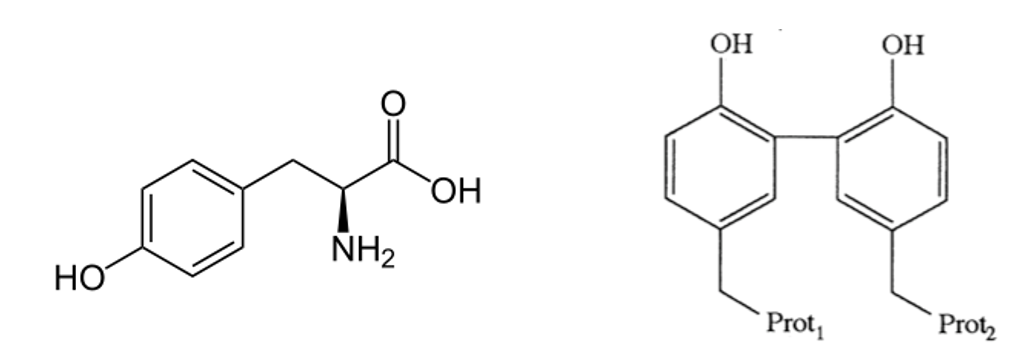Hydrogel Chemistry & Crosslinking – Part 7
Ruthenium-mediated crosslinking
Although it hasn’t been widely used for tissue engineering applications, Fancy and Kodadek have developed an efficient method to photocrosslink polymers that contain the amino acid tyrosine (Fancy and Kodadek 1999).
The mechanism uses visible light to generate a ruthenium-based radical, which in turn generates a tyrosine radical. The tyrosine radical reacts with other tyrosine residues to form dityrosine bonds.
There are a couple of major advantages with this crosslinking mechanism:
- Visible light (452 nm) is used to initiate the crosslinking, rather than the more commonly used UV light;
- For polymers that naturally contain tyrosine (such as fibrinogen), no further functionalization of the polymer is required. Otherwise, adding tyrosine groups can be done readily easily.
- The crosslinking reaction is rapid – typically occurs in seconds.
This crosslinking mechanism has been used to produce tissue sealants from polymers that are commonly used in tissue engineering studies – fibrinogen and gelatin (Elvin et al. 2011; Elvin et al. 2010), but so far, there have been relatively few studies using Ruthenium-mediated crosslinking for cell encapsulation.
Since there is still an incomplete understanding of the potential harmful effects of lower wavelength light during crosslinking, this mechanism may be ideal for future studies with photocrosslinkable gels.
References
Elvin, Christopher M., Alan G. Brownlee, Mickey G. Huson, Tracy A. Tebb, Misook Kim, Russell E. Lyons, Tony Vuocolo, et al. 2011. “The development of photochemically crosslinked native fibrinogen as a rapidly formed and mechanically strong surgical tissue sealant.” Biomaterials 30 (11): 2059-2065.
Elvin, Christopher M., Tony Vuocolo, Alan G. Brownlee, Lillian Sando, Mickey G. Huson, Nancy E. Liyou, Peter R. Stockwell, et al. 2010. “A highly elastic tissue sealant based on photopolymerised gelatin.” Biomaterials 31: 8323-8331.
Fancy, David A. and Thomas Kodadek. 1999. “Chemistry for the analysis of protein-protein interactions: Rapid and efficient cross-linking triggered by long wavelength light.” Proceedings of the National Academy of Sciences of the United States of America 96 (11): 6020-6024.
Read the previous article in this series.




